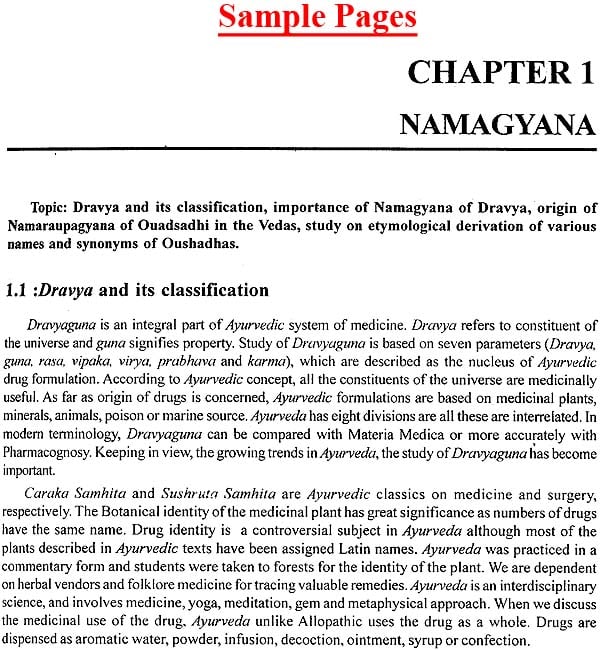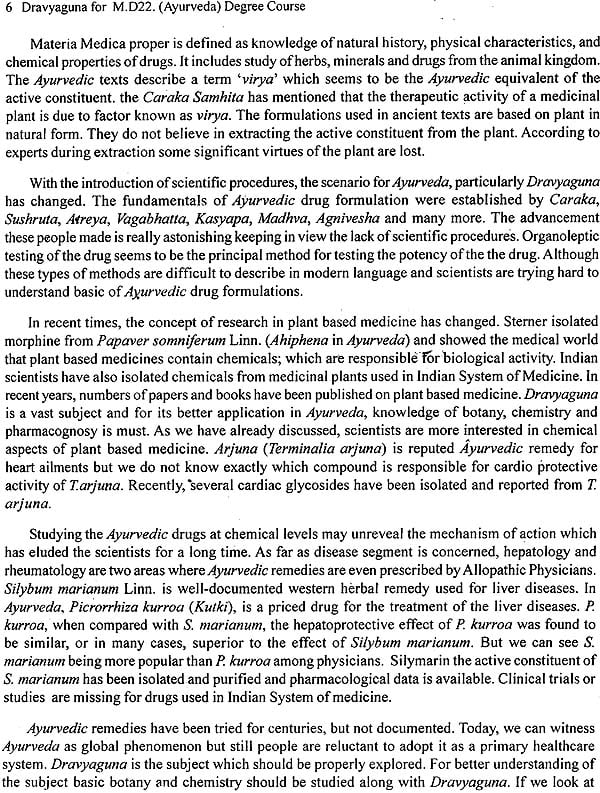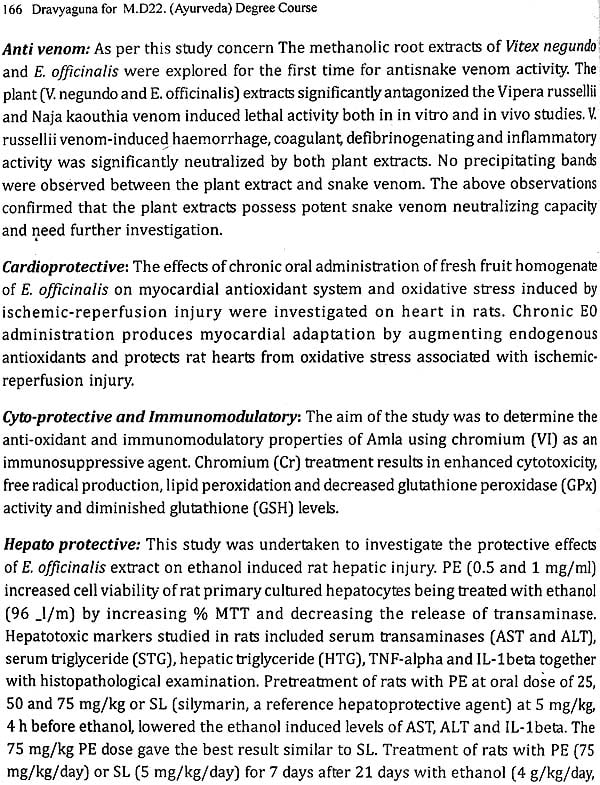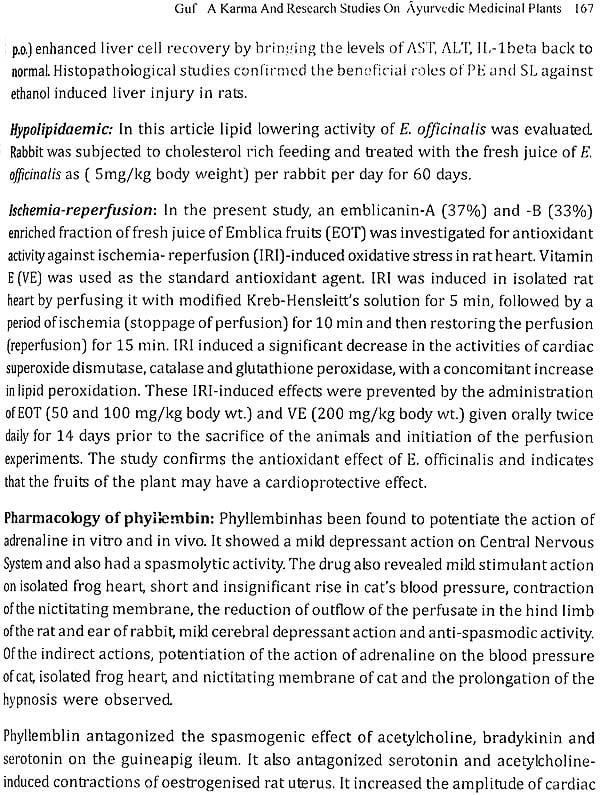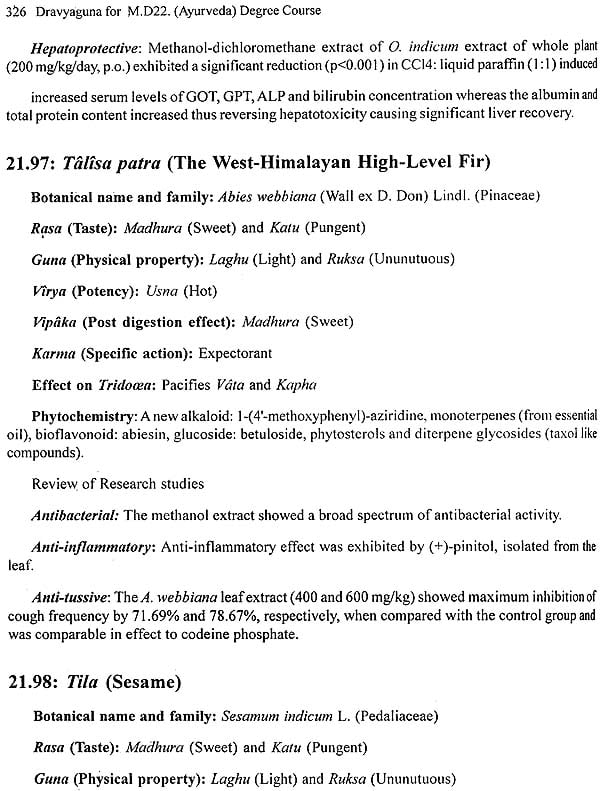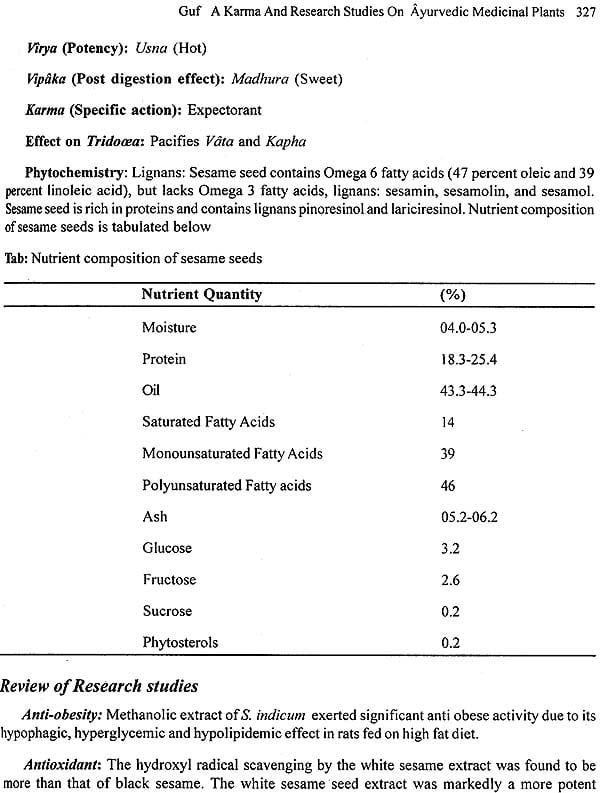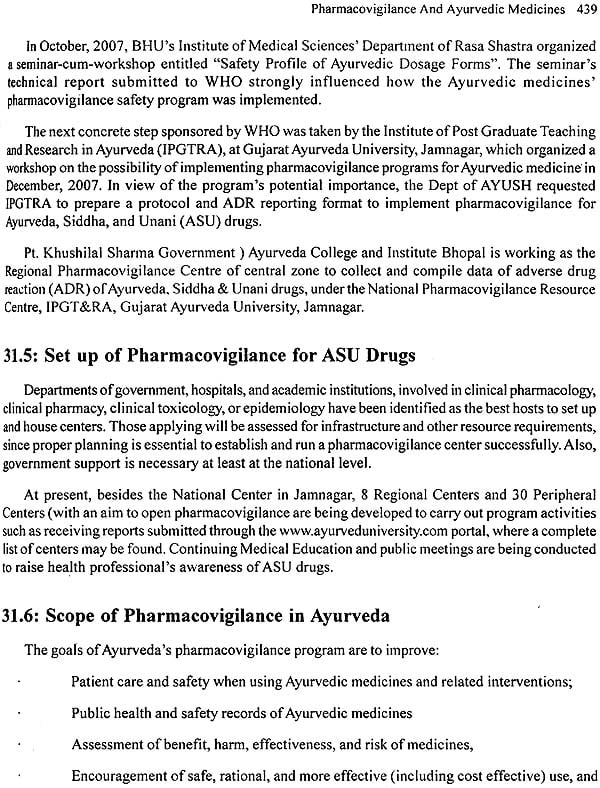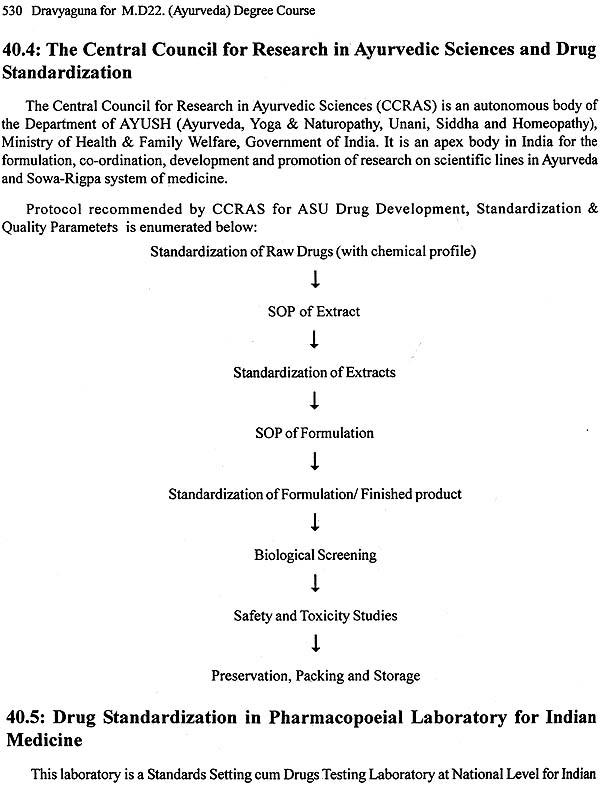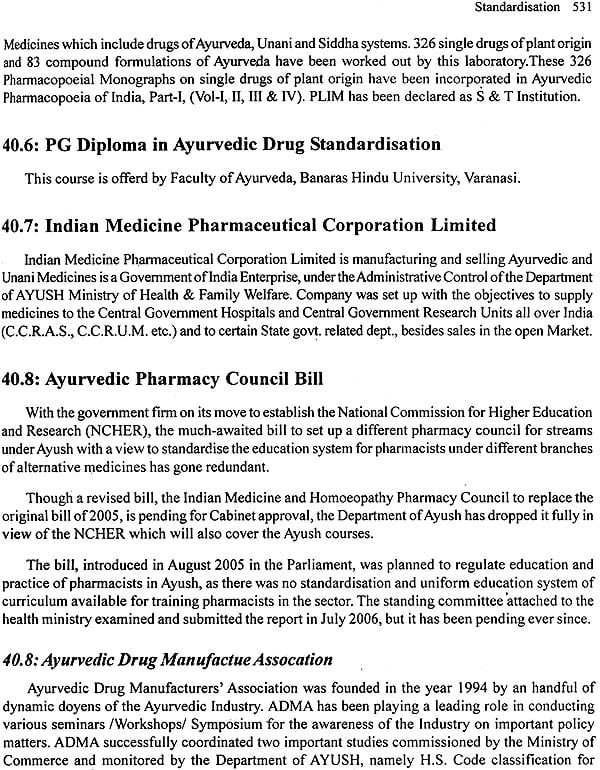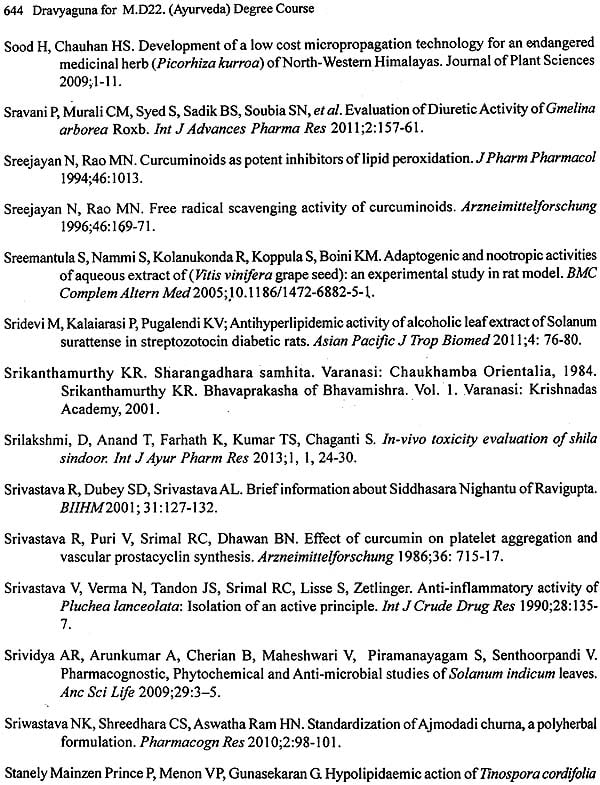
A Text Book of Dravyaguna
Book Specification
| Item Code: | NAN776 |
| Author: | Dr. Amritpal Singh |
| Publisher: | CHAUKHAMBHA ORIENTALIA, Delhi |
| Language: | English |
| Edition: | 2017 |
| Pages: | 678 |
| Cover: | Hardcover |
| Other Details | 9.5 inch X 7.5 inch |
| Weight | 1.10 kg |
Book Description
Dr. Hemant Kumar Panigrahi
It is an ancient Authoritative surgical treatise in Ayurveda. It is an unique book which has been written entirely in a new angle not attempted by any author till now. The author worked in a missionary spirit and take up the challenge of bringing out an authentic translation with its anvaya, annotation, along with English equivalents, and commentary in English. The complete text is being presented in 6 volumes. So many books published upon Susruta Samhita with its English translation, but the speciality of this book is, it contains the original text of Susruta in Sanskrit followed by its authentic English translation, anvaya of each slokas, explanations where every necessary are furnished in authoritative invocations which makes each volume self reliant. Besides this suggestions given regarding possible area of research so that research can be planned on the basis of suggestion made in this book.
With the increasing interest nowadays for the study of texts in Ayurveda, both with in and out side india, a great need is felt for English translation and with its bit by bit anvaya vyakhya. This work on Susruta Samhita published first time is hope to be immense helpful for research scholars / students &, practitioners of Ayurveda.
We feel extremely happy in presenting the book titled "A Text Book of Dravyaguna for M.D. Ayurveda Degree Course before the Ayurvedic and Dravyaguna fraternity. For the first time, a book has been published to cater the need of students pursuing MD (Ayurveda) Dravyaguna course. The idea of writing the book devoted to PG studies in Dravyaguna was due to overwhelming response to the book Dravyaguna for BAMS course.
Charaka wrote 'Everything in the universe has medicinal application' .. Before the evident of modem medicine, man was completely dependent upon medicinal plants for curing as well as preventing diseases. Ancient scholars preserved their work on medicinal plants in form of Nighantus. Later on the subject Dravyaguna came in existence and it has significant place in Ayurvedic system of medicine. Scholars of the western countries wrote Materia Medica, the term coined for the subject dealing with study of drugs derived from natural source. Materia Medica has been largely replaced by term Pharmacognosy.
It deals with study of drugs derived from natural (plant, animal or marine) origin. In the recent past, the study of Dravyaguna has become more important because of global acceptance of Ayurvedic system of medicine. Ayurveda has its own concept as far as drug formulation is concerned. Ayurveda has documented Dravya, Guna, Rasa, Virya, Vipaka, Prabhava and Karma for all medicinal agents and these represent the pharmacological aspects of formulation used in Ayurveda.
In Ayurveda, drugs have been classified in number of ways but the classification based on action of the drug is widely accepted. For instance a drug used for alleviating worm infection is known as anthelmintic and in Ayurvedic language, krimighana. In modem medicine, drugs have been classified according to pharmacological actions. Today we can witness changing scenario as far as Ayurveda is concerned. In China and Western countries, herbal medicine has got into limelight because or advancement in research and development. Taxol (Taxus brevifolia), Silymarin (Silybum marianum, Artemisinin (Artemisia annua) are some reputed drugs in synthetic system of medicine. All the three drugs owe their origin to plants.
In India, several steps have been taken to improve quality of Ayurvedic medicines. Good manufacturing practice (GMP) guidelines have been introduced so as to ensure quality control. Medicinal plant boards have been constituted at state and center level to inspire people particularly the farmers for adopting cultivation of medicinal plants. Herbal gardens have been developed to make common man conversant with rich heritage of Indian system of medicine. More so reputed multinationals have diversified into Ayurveda keeping in mind the future of healthcare system. Various institutes are studying medicinal herbs used in Indian system of medicine as number of paper has been published favouring efficacy of Ayurvedic formulations.
Keeping in mind the latest trends in Ayurveda, the study of Dravyaguna has become more important. Some medicinal plants have Iike Ashwagandha, Brahami, Tulasi, Guggul, Kutthi, Kalmegha, Gokshura and Shatavari have been targeted by modern science for application in modern science. Active constituents of the plants have been identified and highly purified extracts are being marketed. According to World health organization (WHO), only fraction of the green flora has been studied for medicinal application and lot of work is still to be done. India is blessed with rich biodiversity and one can expect the role to be offered by Dravyguna in future. Norman R. Farnsworth of the University of Illinois in his speech at Chicago said "Each plant is a unique chemical factory". These words are definitely repetition of what Charaka told thousand years ago.
Despite all efforts, mistakes cannot be ruled out. Suggestions for the improvement of the book are welcome. Lastly, my sincere thanks to Mr.Ajay Gupta, Chaukhambha Orientalia, Delhi for bringing out book in short span of time.
| Preface | v | |
| Chapter 1 | Namagyana | 5-13 |
| Chapter 2 | Rupagyana | 14-19 |
| Chapter 3 | Rupagyana | 20-21 |
| Chapter 4 | Pharmacognosy | 22-26 |
| Chapter 5 | Ayurvedic Drug Classification | 27-30 |
| Chapter 6 | Organised and Unorganised Drugs | 31-32 |
| Chapter 7 | Morphology of Vegetable Drugs of Ayuvreda | 33-57 |
| Chapter 8 | Drug Research methods | 58-59 |
| Chapter 9 | Stamdardosatopm pf Cride Dirgs | 60-71 |
| Chapter 10 | Cultivation and Marketing of ASU Durgs | 72-80 |
| Chapter 11 | Factors Affecting Quality of Crude Durtgs | 81-84 |
| Chapter 12 | Introduction of Tissue Culture Techniques | 85-88 |
| Used for Ayurvedic Durgs | ||
| Chapter 13 | Anukta Dravya (Extra Pharmacopoeial Durgs) and research institutes | 89-97 |
| Chapter 14 | Controversial Aspects of Ayurvedic Durgs | 98-101 |
| Chapter 15 | Adi;etratopm amd Sinsotites pf Cride Dirgs amd | 102-112 |
| Chapter 16 | Knowledge of TKDL, IPR, Publications and Related Issues | 113-118 |
| Chapter 17 | Introduction of Pharmacogenomics | 119-122 |
|
| ||
|
| ||
| Chapter 18 | Fundamental Principles of Drug Action | 127-129 |
| Chapter 19 | Detailed Study of Rasa Panchaka | 130-142 |
| Chapter 20 | Karma | 143-156 |
| Chapter 21 | Guna Karma and Research Studies on Ayurvedic Medicinal Plants | 157-337 |
| Chapter 22 | Aharadravya | 338-356 |
| Chapter 23 | Pharmacology | 357-364 |
| Chapter 24 | Procedures, Equipments and Instruments in Pharmacooogy | 365-366 |
| Chapter 25 | Experimental Pharmacology | 367-377 |
| Chapter 26 | Toxicology of Ayurvedic durgs | 378-388 |
|
| ||
|
| ||
| Chapter 27 | General Pharmacology | 393-402 |
| Chapter 28 | Clinico-pharmacological evaluation/amyeek prayoga (Therapeutic Administration) of Drugs | 403-432 |
| Chapter 29 | Drug Incompatibility | 433-434 |
| Chapter 30 | Clinical Pharmacology | 435-436 |
| Chapter 31 | Pharmacovigilance and ayurvedic Medicines | 437-440 |
| Chapter 32 | Biothics and Clinical Research | 441-449 |
| Chapter 33 | Pharmacoepidemiology | 450-452 |
|
| ||
|
| ||
| Chapter 34 | History of Dravya Dravyaguna | 457-479 |
| Chapter 35 | Good Manufacturing Practices | 480-485 |
| Chapter 36 | Quality Control of Ayush Drugs | 486-488 |
| Chapter 37 | Nutraceuticals cosmeceuticals, food Additives and Excepeints | 489-495 |
| Chapter 38 | Detailed Study of Formulations | 496-510 |
| Chapter 39 | Herbal Extracts | 511-516 |
| Chapter 40 | Standardisation | 517-532 |
| Notes | 569 | |
| Further Reading | 575 |
